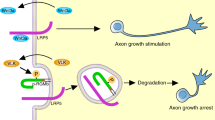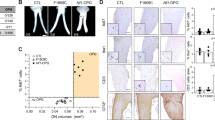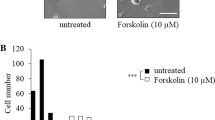Abstract
Activation of the neurotrophin receptor TrkA by its ligand nerve growth factor (NGF) initiates a cascade of signaling events leading to neuronal differentiation in vitro and might play an important role in the differentiation of favorable neuroblastomas (NB) in vivo. To study TrkA signal transduction pathways and their effects on differentiation in NB, we stably expressed wild-type TrkA and five different TrkA mutants in the NGF unresponsive human NB cell line SH-SY5Y. Resulting clones were characterized by TrkA mRNA and protein expression, and by autophosphorylation of the receptor. Introduction of wild-type TrkA restored NGF responsiveness of SH-SY5Y cells, as demonstrated by morphological differentiation, activation of mitogen-activated protein kinases (MAPK) and induction of immediate-early genes. Expression of TrkA in the absence of NGF resulted in growth inhibition of transfectants compared to parental cells, whereas NGF-treatment increased their proliferation rate. Analysis of downstream signal transduction pathways indicated that NGF-induced differentiation was dependent on TrkA kinase activity. Our data suggest that several redundant pathways are present further downstream, but activation of the RAS/MAPK signaling pathway seems to be of major importance for NGF mediated differentiation of NB cells. Our results also show that the signaling effector SH2-B is a substrate of NGF-mediated Trk signaling in NB, whereas it is not activated by NGF in rat pheochromocytoma PC12 cells. This might explain the differences we observed in TrkA signaling between neuroblastoma and PC12 cells. Further insight into TrkA signaling may suggest new options for the treatment of NB.
This is a preview of subscription content, access via your institution
Access options
Subscribe to this journal
Receive 50 print issues and online access
$259.00 per year
only $5.18 per issue
Buy this article
- Purchase on Springer Link
- Instant access to full article PDF
Prices may be subject to local taxes which are calculated during checkout






Similar content being viewed by others
Abbreviations
- NB:
-
neuroblastoma
- Trk:
-
tyrosine kinase (receptor)
- NGF:
-
nerve growth factor
- MAPK:
-
mitogen-activated protein kinase
- PLCγ1:
-
phospholipase γ1
- PI3K:
-
phosphatidylinositol-3-kinase
- SNT:
-
Suc-associated neurotrophic factor-induced tyrosine phosphorylated target
- ERK:
-
extracellular signal-regulated kinase
- WT:
-
wild-type
- BrdU:
-
bromodeoxyuridine
- RT:
-
reverse transcriptase
- MTT:
-
3-(4,5-dimethylthiazol-2-yl)-2,5-diphenyl tetrazolium bromide
- kDa:
-
kilodalton
- LNGFR:
-
low affinity nerve growth factor receptor
- Grb2:
-
Growth factor receptor-bound protein 2
- SOS:
-
protein encoded by the son-of-sevenless gene
- ECL:
-
enhanced chemiluminescence
References
Alessi DR, Cuenda A, Cohen P, Dudley DT and Saltiel AR . 1995 J Biol Chem 270: 27489–27494
Anderson DJ . 1993 Annu Rev Neurosci 16: 129–158
Azar CG, Scavarda NJ, Reynolds CP and Brodeur GM . 1990 Cell Growth Differ 1: 421–428
Biedler JL, Helson L and Spengler BA . 1973 Cancer Res 33: 2643–2649
Brodeur GM . 1993 J Natl Cancer Inst 85: 344–345
Chomczynski P and Sacchi N . 1987 Anal Biochem 156–159
Eggert A, Brodeur GM and Ikegaki N . 2000 Biotechniques 28: In press
Greene LA, Cunningham ME, Farinelli SE and Park DS . 1997 Culturing Nerve Cells Banker G and Goslin K eds MIT Press Cambridge, MA
Greene LA and Kaplan DR . 1995 Curr Opin Neurobiol 5: 579–587
Kaplan DR and Miller FD . 1997 Curr Opin Cell Biol 9: 213–221
Kaplan DR and Stephens RM . 1994 J Neurobiol 25: 1404–1417
Klein R, Jing S, Nanduir V, O'Rourke E and Barbacid M . 1991 Cell 65: 189–197
Kogner P, Barbany G, Dominici C, Castello M, Raschella G and Persson H . 1993 Cancer Res 53: 2044–2050
Kouhara H, Hadari YR, Spivak-Kroizman T, Schilling J, Bar-Sagi D, Lax I and Schlessinger J . 1997 Cell 89: 693–702
Lavenius E, Gestblom C, Johansson I, Nanberg E and Pahlmann S . 1995 Cell Growth Differ 6: 727–736
Lavenius E, Parrow V, Nanberg E and Pahlman S . 1994 Growth Factors 10: 29–39
Loeb DM and Greene LA . 1993 J Neurosci 13: 2919–2929
Loeb DM, Stephens RM, Copeland T, Kaplan DR and Greene LA . 1994 J Biol Chem 269: 8901–8910
Loeb DM, Tsao H, Lobb MH and Greene LA . 1992 Neuron 9: 1053–1065
Marshall CJ . 1995 Cell 80: 179–185
Matsushima H and Bogenmann E . 1990 Mol Cell Biol 10: 5015–5020
Matsushima H and Bogenmann E . 1993 Mol Cell Biol 13: 7447–7456
Meakin SO, MacDonald JI, Gryz EA, Kubu CJ and Verdi JM . 1999 J Biol Chem 274: 9861–9870
Miller AD and Rosman GJ . 1989 Biotechniques 7: 980–982
Mosmann T . 1983 J Immunol Methods 65: 55–63
Muragaki Y, Chou TT, Kaplan DR, Trojanowski JQ and Lee VM-Y . 1997 J Neurosci 17: 530–542
Nakagawara A, Arima-Nakagawara M, Scavarda NJ, Azar CG, Cantor AB and Brodeur GM . 1993 N Engl J Med 328: 847–854
Obermeier A, Halfter H, Wiesmueller KH, Jung J, Schlessinger J and Ullrich A . 1993 EMBO J 12: 933–941
Pellici G, Lanfrancone L, Grignani F, McGlade J, Carallo F, Forni G, Nicoletti I, Grignani F, Pawson T and Pelicci PG . 1992 Cell 70: 93–104
Peng X, Greene LA, Kaplan DR and Stephens RM . 1995 Neuron 5: 395–406
Poluha W, Poluha DK and Ross AH . 1995 Oncogene 10: 185–189
Qian X, Riccio A, Zhang Y and Ginty DD . 1998 Neuron 21: 1017–1029
Rhee SG and Choi KD . 1992 J Biol Chem 267: 12393–12396
Robbins DJ, Cheng M, Zhen E, Vanderbilt CA, Feig LA and Cobb MH . 1992 Proc Natl Acad Sci USA 89: 6924–6928
Rozakis-Adcock M, McGlade J, Mbamalu G, Pelicci G, Daly R, Li W, Batzer A, Thomas S, Brugge J, Pelicci PG et al. 1992 Nature 360: 689–692
Schlessinger J and Ullrich A . 1992 Neuron 9: 383–391
Sheng M and Greenberg ME . 1990 Neuron 4: 477–485
Stephens RM, Loeb DM, Copeland TD, Pawson T, Greene LA and Kaplan DR . 1994 Neuron 12: 1–20
Vlahos CJ, Matter WF, Hui KY and Brown RF . 1994 J Biol Chem 269: 5241–5248
Acknowledgements
We thank Dr David Kaplan for the TrkA mutants and Dr John Maris for discussing the manuscript. This work was supported by Grants from the Deutsche Krebshilfe/Dr Mildred Scheel Stiftung (A Eggert), the National Institutes of Health Grant NS 34514 (GM Brodeur), and the Audrey E Evans Endowed Chair (GM Brodeur).
Author information
Authors and Affiliations
Rights and permissions
About this article
Cite this article
Eggert, A., Ikegaki, N., Liu, Xg. et al. Molecular dissection of TrkA signal transduction pathways mediating differentiation in human neuroblastoma cells. Oncogene 19, 2043–2051 (2000). https://doi.org/10.1038/sj.onc.1203518
Received:
Revised:
Accepted:
Published:
Issue Date:
DOI: https://doi.org/10.1038/sj.onc.1203518
Keywords
This article is cited by
-
Molecular mechanism of nur77 gene expression and downstream target genes in the early stage of forskolin-induced differentiation in PC12 cells
Scientific Reports (2020)
-
Cell death-based treatment of neuroblastoma
Cell Death & Disease (2018)
-
WNT signaling, the development of the sympathoadrenal–paraganglionic system and neuroblastoma
Cellular and Molecular Life Sciences (2018)
-
Retinoic acid-induced CHD5 upregulation and neuronal differentiation of neuroblastoma
Molecular Cancer (2015)
-
Rotary bioreactor culture can discern specific behavior phenotypes in Trk-null and Trk-expressing neuroblastoma cell lines
In Vitro Cellular & Developmental Biology - Animal (2014)



